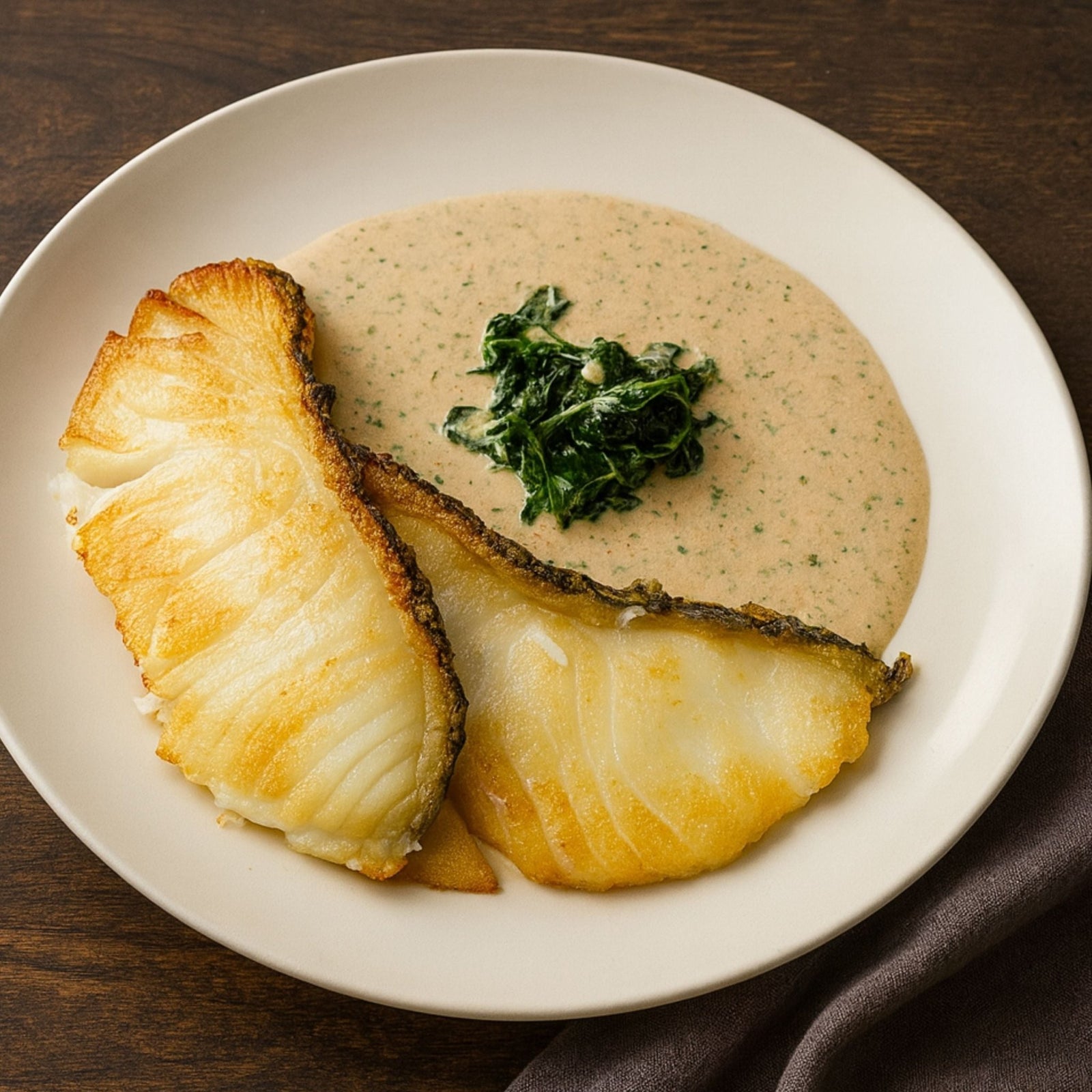Here’s your next kitchen flex: Chilean Seabass Steak with Brown Butter Dashi Cream. It’s where French meets Japanese—nutty brown butter, silky cream, and a touch of umami-rich dashi. Sear Pacific Bay Chilean Seabass until just flaky, spoon on the sauce, and serve with quick-sautéed spinach.
The result? A buttery, savory dish that feels restaurant-level but takes less than 30 minutes to make.
Our Pacific Bay Chilean Seabass is portioned for even cooking and frozen at peak freshness, so every bite melts like butter. Perfect for date nights, dinner parties, or any night you just want something special—minus the stress.
Chilean Seabass Steak with Brown Butter Dashi Cream
Yield: 3–4 servings
Prep Time: 10 minutes
Cook Time: 15 minutes
Difficulty: Easy–Medium
INGREDIENTS
300g Pacific Bay Chilean Seabass Steak
Salt and freshly ground black pepper, to taste
4 tbsp unsalted butter
1 cup cooking or whipping cream (if using all-purpose cream, loosen with water or milk as needed)
1 tsp dashi powder
½ tsp Japanese soy sauce
1 bunch spinach, washed and trimmed
1–2 tsp neutral oil or butter, for sautéing spinach
Fresh parsley, chopped, for garnish
PROCEDURE
Season the fish. Pat the seabass steak dry and lightly season both sides with salt and pepper; set aside.
Brown the butter and make the sauce. In a saucepan over low heat, melt butter until it turns golden and smells nutty. Whisk in cream (loosen first if using all-purpose), simmer gently to emulsify, then season with dashi powder and soy sauce; keep warm on low.
Pan-sear the seabass. Heat a non-stick pan over medium. Lightly oil if needed. Sear seabass about 2½ minutes per side (thickness-dependent) until opaque, just flaky at the center, and nicely browned.
Wilt the spinach. In a separate pan, sauté spinach with a little butter or oil until just wilted; season with a pinch of salt.
Plate and finish. Nestle seabass over spinach, spoon brown butter dashi cream over the fish, and garnish with chopped parsley. Serve immediately.
NOTES
Pacific Bay Advantage: Pacific Bay Chilean Seabass is portioned for even cooking, frozen at peak freshness, and delivers a rich, buttery texture that stands up to bold sauces.
Pan success: Dry the fish well and preheat the pan to prevent sticking; don’t move the fish until a light crust forms.
Sauce balance: Start gently—dashi and soy add umami and salt. Taste before adding extra salt.
Doneness cue: Fish should flake with light pressure and remain moist at the center (internal temp ~50–52°C for medium).
Alternatives: You can substitute Pacific Bay Halibut Steak or Pacific Bay Gindara Steak; adjust sear time based on thickness.
Storage & reheating: Best fresh. If needed, refrigerate fish and sauce separately up to 1 day; rewarm sauce gently and reheat fish briefly in a low oven (avoid overcooking).
Serving ideas: Spoon extra sauce over mashed potatoes, rice, or buttered noodles; add lemon wedges for brightness.
FAQS
Q: How do I sear Chilean seabass without it sticking to the pan?
A: Pat the fish dry, preheat a non-stick pan over medium, add a thin film of oil, and let the first side sear undisturbed until it releases naturally before flipping.
Q: Can I make brown butter dashi cream with all-purpose cream?
A: Yes. Loosen all-purpose cream with a splash of water or milk before whisking into the brown butter to prevent thickness and help it emulsify smoothly.
Q: What sides go with Chilean seabass in dashi cream sauce?
A: Wilted spinach, steamed rice, mashed potatoes, or buttered noodles all work. Add lemon wedges or a light salad to cut the richness.

